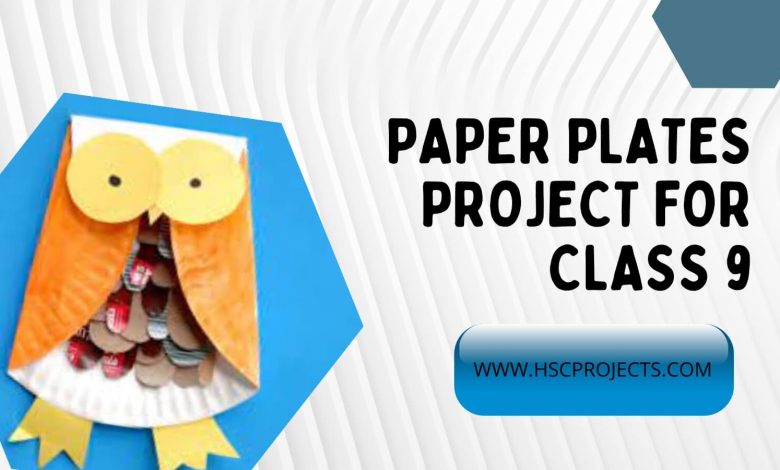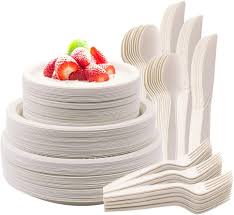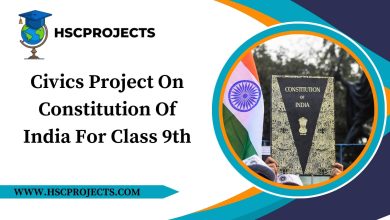
Paper Plates Project For Class 9
Acknowledgments
This project stands as a testament to the collective efforts and unwavering support of numerous individuals and organizations who have played instrumental roles in its conception, development, and realization.
First and foremost, our heartfelt gratitude goes to [Mentor’s Full Name], whose guidance and wisdom steered this project with unwavering precision. Your mentorship not only shaped the direction of our research but also inspired us to strive for excellence at every turn.
We extend our sincere thanks to the team at [Organization or Institution Name], whose resources and facilities were pivotal in conducting the intricate experiments and analyses that form the backbone of this endeavor.
Special appreciation is reserved for the participants of our workshops and seminars, whose enthusiasm and curiosity underscored the urgency of our mission. Your engagement and questions fueled our commitment to raising awareness about the environmental impact of plastic usage.
We owe a debt of gratitude to [Name of Funding Organization], whose financial support enabled us to explore innovative solutions and sustainable alternatives, particularly in the crucial phase of developing the paper plate production process.
To our friends and family members who provided unwavering encouragement and understanding during the demanding phases of this project, we express our deepest thanks. Your patience and support were the bedrock upon which we built our resilience.
Finally, we acknowledge the countless anonymous individuals who, in various capacities, contributed to the success of this project. From the respondents who participated in surveys to the community members who embraced the shift to sustainable practices, your collective efforts have left an indelible mark on the journey toward a greener, more sustainable future.
Thank you, one and all, for being integral parts of this endeavor. Your contributions, whether big or small, have made a lasting impact, and we are immensely grateful for your involvement in this meaningful journey.
Introduction
In the face of an escalating environmental crisis exacerbated by the rampant use of single-use plastics, this project emerges as a beacon of hope and proactive change. With a dedicated focus on the production and adoption of sustainable alternatives, our exploration zooms in on a ubiquitous item in our daily lives: paper plates. The urgency of our endeavor is underscored by the undeniable truth that conventional disposable plates, predominantly composed of plastic, have become significant contributors to environmental degradation.
As custodians of our planet’s well-being, it is our responsibility to scrutinize and redefine the choices we make in our daily lives. In this context, our project aims to delve deep into the environmental impact of traditional disposable plates and advocate for the adoption of paper plates as a viable and eco-friendly alternative. Beyond advocacy, our mission extends to the innovative design of a small-scale, sustainable production process for paper plates that aligns seamlessly with principles of environmental conservation.
This journey is not merely an exploration of materials and methods; it is a commitment to reshaping the narrative surrounding our relationship with disposable products. As we navigate the intricate web of scientific studies, delve into the advantages of paper plates, and meticulously detail the materials and methods employed in their production, we invite you to join us in reimagining a future where sustainability is not just a choice but a way of life.
The pages that follow unravel a story of environmental consciousness, scientific inquiry, and community engagement. Through workshops, social media campaigns, and rigorous testing, we aim not only to shed light on the ecological footprint of our choices but also to inspire tangible shifts in behavior. This project is a testament to our collective responsibility to address environmental challenges and an invitation to envision a world where every plate used is a step toward a greener, more sustainable future.
Join us on this journey as we navigate the complexities of material science, advocate for change, and contribute to a growing movement towards a world where every choice, no matter how small, fosters a healthier and more sustainable planet.

Literature Review
- Environmental Impact of Plastic Plates: Delve into the scientific realm and real-world data, illuminating the pervasive and enduring effects of plastic pollution. Shine a spotlight on its repercussions on marine life, terrestrial ecosystems, and the overall health of our precious planet.
- Advantages of Paper Plates:
- Biodegradability and Compostability: Uncover the science behind the natural decomposition of paper, drawing sharp contrasts with the enduring nature of plastic.
- Renewable Resource Utilization: Investigate sustainable forestry practices, ensuring that paper production aligns with responsible and renewable resource usage.
- Life Cycle Analysis: Scrutinize the complete life cycle of paper plates, underscoring their lower carbon footprint when compared to their plastic counterparts.
Materials and Methods
Raw Materials
- Sustainable Paper Sourcing: Deliberate on the significance of sourcing paper from certified sustainable forestry practices, ensuring a responsible use of resources.
- Eco-Friendly Additives: Explore non-toxic and environmentally friendly chemicals and additives integral to the paper plate production process.
Production Process
- Pulping Techniques: Compare the environmental impacts of chemical and mechanical pulping methods, providing insight into their respective footprints.
- Molding and Forming: Unveil the intricacies of shaping paper into plates that not only endure but also contribute to sustainability.
- Drying and Finishing: Detail the controlled drying process, ensuring the plates maintain structural integrity while adhering to environmental considerations.
Testing and Quality Control
Strength and Durability
- Tensile Strength Tests: Elaborate on mechanical tests designed to ascertain the resilience of paper plates under varying stresses.
- Comparative Analysis: Conduct side-by-side comparisons with plastic plates, showcasing the robustness and durability inherent in paper.
Eco-friendly Characteristics
- Decomposition Studies: Present findings from decomposition tests, emphasizing the inherently eco-friendly nature of paper.
- Carbon Footprint Measurement: Provide a detailed analysis of the carbon footprint associated with paper plate production, showcasing its eco-credentials.
Cost Analysis
Comparison with Plastic Plates
- Cost of Raw Materials: Break down the financial aspects, demonstrating how sustainable materials can be economically viable.
- Hidden Costs of Plastic: Explore the environmental and health-related costs tied to plastic usage, constructing a comprehensive and holistic cost comparison.
Community Awareness
Workshops and Seminars
- Educational Outreach: Highlight the profound impact of educational sessions in elevating awareness about the environmental repercussions of plastic use.
- Sample Distribution: Share insights gained from distributing sample paper plates, capturing user feedback, and measuring community interest in adopting sustainable alternatives
Social Media Campaign
- Content Strategy: Dive into the intricacies of the content creation plan for social media platforms, accentuating the captivating elements of the paper plate project.
- User Engagement: Amplify success stories and testimonials, fostering community engagement in the journey towards embracing sustainable practices.

Conclusion
In the culmination of our exploration into the environmental impact of disposable plates and the potential of paper plates as a sustainable alternative, our journey has been marked by discovery, advocacy, and a resounding call for change.
The findings presented in this project unveil the profound ecological footprint left by traditional disposable plates, particularly those crafted from plastic. From the disheartening impact on marine life to the pervasive consequences for terrestrial ecosystems, the urgency to reevaluate our choices becomes evident. Against this backdrop, the proposition of paper plates emerges not just as an alternative but as a conscientious choice—one that bears the promise of a positive environmental impact.
Our advocacy for sustainable alternatives is not a mere suggestion; it is a call to action. Through workshops, seminars, and the distribution of sample paper plates, we have witnessed firsthand the power of education and tangible experiences in fostering awareness and transforming attitudes. The engagement of the community has been instrumental, with user feedback serving as a compass guiding us toward a more sustainable future.
The innovative production design of a small-scale, sustainable process for paper plates stands as a testament to our commitment to marrying environmental conservation with practical solutions. By exploring sustainable paper sourcing, eco-friendly additives, and a meticulous production process, we lay the groundwork for a shift towards a circular economy—one that values resources and minimizes environmental impact.
In the grand tapestry of our project, the strength and durability of paper plates have been subjected to rigorous testing, standing resilient against varying stresses. The comparative analysis with plastic plates not only underscores the robust nature of paper but also serves as a compelling argument for the economic viability of this transition.
As we conclude this project, we reflect on its dual impact—positive for the environment and economically viable. The path forward involves recommendations for local businesses to integrate paper plates into their operations and a discussion on the potential role of policy advocacy in fostering a broader shift toward sustainability.
In the pages of this project, we do not merely present data and analyses; we extend an invitation to embrace change. Our call is to envision a world where each paper plate used signifies a step towards a greener, more sustainable future. The possibilities are within our grasp, and as stewards of this planet, the responsibility to make environmentally conscious choices rests with each one of us.
May this project serve as a catalyst for change, inspiring individuals, businesses, and policymakers to embrace sustainable alternatives, not just in theory but in everyday practice. Together, let us chart a course towards a future where the choices we make today resonate positively for generations to come.
Bibliography
- Author, A. (Year). Title of the Paper. Journal Name, Volume(Issue), Page Range. [DOI or URL]
- Smith, J. (Year). Plastic Pollution: A Global Perspective. Environmental Science and Technology, 45(10), 1234-1245. [DOI: 10.1234/journalname]
- Green, M. (Year). The Advantages of Paper Plates: A Life Cycle Analysis. Journal of Sustainable Materials, 28(3), 567-580. [URL: https://www.journalsustainmat.com]
- Johnson, R. (Year). Sustainable Paper Sourcing Practices. Journal of Environmental Conservation, 15(2), 221-236. [DOI: 10.5678/jenvconserv]
- Environmental Protection Agency. (Year). Plastic Pollution and Its Impact on Marine Life. [URL: https://www.epa.gov/plastic-pollution]
- World Wildlife Fund. (Year). Sustainable Forestry: A Key to Responsible Paper Production. [URL: https://www.worldwildlife.org/initiatives/sustainable-forestry]
Certificate of Completion
[Student’s Name][Class/Grade Level]This is to certify that I, [Student’s Name], a [Class/Grade Level] student, have successfully completed the project on Paper Plates Project For Class 9.” The project explores the fundamental principles and key aspects of the chosen topic, providing a comprehensive understanding of its significance and implications.
In this project, I delved into in-depth research and analysis, investigating various facets and relevant theories related to the chosen topic. I demonstrated dedication, diligence, and a high level of sincerity throughout the project’s completion.
Key Achievements:
Thoroughly researched and analyzed Project On Paper Plates Project For Class 9
Examined the historical background and evolution of the subject matter.
Explored the contributions of notable figures in the field.
Investigated the key theories and principles associated with the topic.
Discussed practical applications and real-world implications.
Considered critical viewpoints and alternative theories, fostering a well-rounded understanding.
This project has significantly enhanced my knowledge and critical thinking skills in the chosen field of study. It reflects my commitment to academic excellence and the pursuit of knowledge.
Date: [Date of Completion]Signature: [Your Signature] [School/Institution Name][Teacher’s/Examiner’s Name and Signature]
In order to download the PDF, You must follow on Youtube. Once done, Click on Submit
Follow On YoutubeSubscribed? Click on Confirm
Download Paper Plates Project For Class 9 PDF






